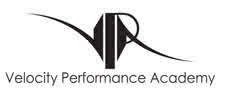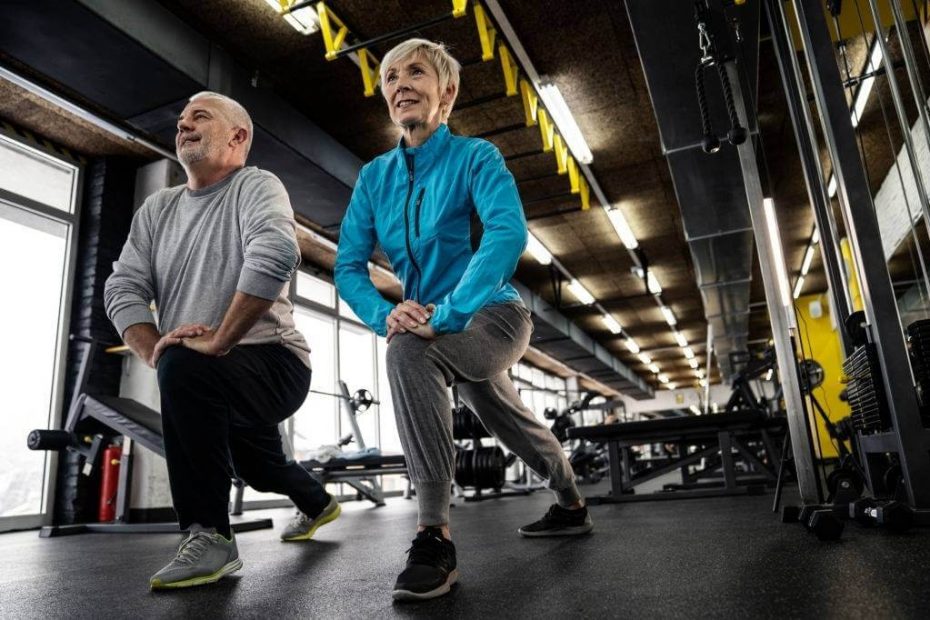Before continuing, let’s make something clear. Absolutely no one prefers to train to do anything, and by whatever, I mean whatever comes to mind, something else. It is a matter of choice, at a particular moment, once we are already lifting the first load of the first series, that’s it, we are already training and we are going to complete the routine. So, with that being said, let’s get started.

Important Nutrition Factors
To start in the gym and for your training, whatever it is, to be successful, we must take into account four important factors:
- Feeding
- Muscle-BMI ratio
- Fat-BMI ratio
- Cardiovascular (cardio, resistance, etc.)
At the end of the post there will be a list with the things that one should and those that one can buy for the correct functioning when training. That is what our new article consists of about gradually learning the basics and everything necessary to start in the gym and maintain an effective training, depending on our objectives and where we start from.
Meal Plan
This depends a lot on what we want to achieve with the training. To start in the gym, we must know what objectives we are pursuing, but they tend to occur (for someone who has never trained) in the following order: Reduction of body fat – Increase of muscle mass.
Who tells you that it is possible to do both at the same time, is entertaining for free with you, because unfortunately, it is not true and there is no way? And, as logic dictates, the magical ways to eat whatever you want while still being skinny, and more stuck than Stallone, are impossible.
Why? Simple: If you want to reduce the percentage of body fat / BMI, as much as if you want to increase the percentage of muscle / BMI, it is necessary to follow an eating plan, of which, a little later in the post, I will give some guidelines. For those who do not understand what BMI is, I am referring to the Body Mass Index.
I do not recommend taking this as a reference, since the system determines the mass-to-weight ratio.
For example, if we measure 1.80cm and weigh 85 kg, according to BMI our Body Mass Index is 26.23 Kg / m2, therefore we are overweight (from 26 to 30 if I am not mistaken, it is overweight).
When we can simply be in excellent physical condition with significant muscles, this is because muscle weighs more than fat. That is why we cannot trust boards and our own board must be conscientious food + hard training work.
Muscle Fat BMI Ratio
It is clear that we try to reduce the percentage of the second, both for an aesthetic issue and for (which should be and in my opinion is, more importantly) a health issue, and since we are, increase the percentage of the first, for the same reasons.
We are going to associate the concepts:
- Fat reduction = Reduced lime consumption. daily (low calorie diets) + extra calorie burn (cardio)
- Muscle gain = Increased lime intake. daily (hyper caloric diets) + exercises to hypertrophy.
Representation of what would be 1kg of fat and 1kg of muscle
The truth is that it is a very complex issue but little by little we will close doubts.
Cardiovascular Exercise
Cardiovascular exercise is linked to the reduction of body fat, increased lung capacity, and the ability of the muscles to contain oxygen before filling up on lactic acid (the well-known cramp).
Lower percentage of body fat, greater circulation, greater ability to maintain an activity for longer, apparently this has nothing against it! It is almost MIRACULOUS! It is, true, that it is disgusting to get up from the chair to go for a run, but nobody said it was easy, indeed, on the contrary, at first, we said it was difficult and nobody liked it, but it is what it is.
- Start putting together our plan…
We start from the hypothetical case in which we have a low percentage of muscle, and a high percentage of fat.
So, we are going to touch on the rest of the post, fat reduction, muscle gain, and increased cardiovascular capacity. The first thing we have to do is reduce our% body fat.
We do this by managing three points: a hypocaloric diet, that this diet is low in fat (mostly carbohydrates and proteins), and burns more than extra calories through weights and cardiovascular exercise.
It should be understood that 7600 cal = 1kg of fat, so if we normally spend about 2300 calories a day, and to that we add the 600 that are made with only one hour of stationary cycling, and reduce our diet to 1000 calories a day, the account would be: we eat 1000 cal – (2300 + 600) = 2900 (we use); the bill gives us – 1900 cal per day. So, every 4 days we are at -7600 calories = – 1kg of fat.
- In 40 days, we have 10 kg less.
What if it’s so simple, if it sounds so easy? That is, how can it be that we say 40 days 10 kilos, so busy and never EVER get those results? Well, simple, because people fail. Because he does not do an hour of cycling or exercises with weights a day. Because he does not reduce his diet and follow it for 40 days. Because it reduces it to 1000 calories a day, but does not distribute it in 6 meals, then the metabolism slows down, the body gets used to it and one goes down less. Many factors influence, so now we put together the necessary plan to make those 40 days’ worth it. We are going to separate this into Diet and Exercise or cardiovascular training.
Regarding food, we should go to foods that in large quantities have few calories, and that is where we turn to the old vegetables. Yes, it sounds boring, but it is the only way, there is nothing else to read that is effective.
Recommended list:
- Lettuce (Full soup plate = 23 calories, the same as gum)
- Tomato (each 16 cal) 1/2 onion (16 cal)
- 1 1-second spray of cooking spray (3 cal)
There we have two plates full of salad (as if to fill up well) in 58 cal, which is the same as 1/5 of a slice of pizza. Let’s add that the calories in pizza come from fats and oils, and they are harder to burn and less beneficial.
In ATOPEDEGYM you will find ” calorie tables “, and you will be able to make your daily diets, knowing concepts that we have all handled for a long time. Returning to the idea, 2 heaping plates of mixed salad = 58 calories. 20 plates = 580 calories. You didn’t make it to 1000 and you were eating all day. What if; It is tiring, but too much tomato, or lettuce, or anything like that never hurts. Eat about 6 times a day, thus we accelerate the metabolism and yield even more.
Another thing is to drink green tea, which has, in addition to the antioxidant properties of any tea, the quality of helping to eliminate cholesterol and metabolize fats using it as energy, which results in a more effective fat burning. Important: in my experience, supplement a strong hypocaloric diet with a good multivitamin, so that one can perform in the second most important:
Cardio Workout
Running, cycling, elliptical or jumping rope or just walking briskly for half an hour / an hour.
Simply that. There is not much else, nor is there much science or anything hidden. It’s just getting up and doing as much of any (or all) of those things as you can, and gradually increasing your stamina and how long you stay active. For running, comfortable shoes are important, and follow our own pace. It does not matter if it is slow or fast, what is important is to be honest with yourself and know that you are giving your best.
It is not necessary to run, but if we jog, it is better that we stop jogging when we really cannot anymore. And a tip: when you feel like you can’t take it anymore, that your side hurts, and your muscles disarm, hold out for 15 more seconds jogging even a little faster. In this way little by little our limit is running.
To ride a bicycle there is no differentiation between a fixed one or going out to walk on the street. Whatever is preferred, as long as there is evidence. To jump the rope if you never did it with a little patience and practice it takes off. It is like riding a bicycle. The guidelines are the same. Be honest with yourself and always reach your limit… and little by little kick it.
For ellipticals, the intensity and duration of the exercise can be increased little by little, for me it is one of the ones I like the most.
Within 20 minutes of exercise the muscle goes into heat to exercise it to hypertrophy (i.e., for the second stage we need a time begins to burn fat, and 25/30 talent to lie by a cardiovascular exercise). And a time from this, we are ready for the second stage called hypertrophy or increase in muscle mass.
Before getting into this, it would be good for us to know the how, and why of the matter.
Muscle is made up of muscle tissue. As its name implies, it is “woven” by small filaments or “threads.” During the continuous exercise of the same these threads break, and as the body is intelligent, they become “weave” a little stronger, to be able, this time to withstand the exercise to which we exposed it.
So, the exercise is harder and harder and the muscle is bigger and stronger. But it is not that easy either. If the body does not have the necessary bricks as a house when it is built, no matter how much we break the fabric (for example in the gym) it will not have with what to fix and improve them.
Muscle must receive amino acids to grow, and these are found in their complex forms in proteins. A balanced diet already requires 1.3g of protein for every kg of weight. And if we are going to exploit the potential of the muscle, this figure rises to between 1.5g and 1.8g per kg of weight (depending on the intensity of the activity). Let’s not overdo it, because if the body receives too much protein, it leaves through the urine and we make the kidneys work much more, without meaning. Now, to give you an idea, the egg white provides the 8 essential amino acids (remember, amino acid chains = proteins).
It is a good idea to eat only the white, since the yolk provides all the cholesterol and calories in the egg, although many people think the opposite, so you can try, there are much better foods to get the vitamins that the white provides.
In addition to eggs, chicken, tuna, lean meat, milk, cheese, broccoli, and soy top the protein weight charts. (For the tables, again we go to TABLE OF CALORIES.) For hypertrophy itself there are not many options, good if there are, but the most common. Swimming and gym in the lead.
For the gym we should start with a routine that handles all muscle groups and then break it down into two or three groups, which we will work more intensely. It is also advisable to ask the gym teacher for an exercise routine telling him what we have been doing.
It is important that the routine does not last more than an hour because the muscles go into a catabolic state, and instead of metabolizing protein, they lose constitution.
It is also good to know that (taking out at the beginning, with our first routine, in which the training will be light) the muscles can NOT be trained two days in a row. Minimum every other day, because if muscle rest is not respected, growth will not be as expected.
It is vitally important to STRETCH the muscle well, after having worked it. Stretch it in the shower under the hot water and thus avoid all the pain and harshness of the other day.
Remember to write down weights and if you can take pictures of yourself to control your training.
It should also be noted that the last meal prior to training should be an hour or two before, this is because the blood, otherwise, will be working to digest and distribute, and will not reach the muscles in the same way, and before training take something loaded with sugar (even a spoonful of sugar works well) because what the body uses during training is blood sugar. And most important of all, perseverance, will and responsibility in training and eating.












